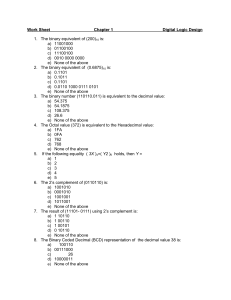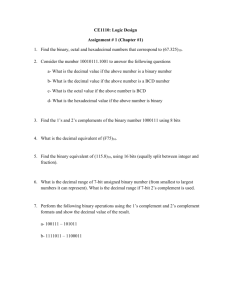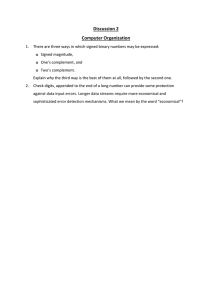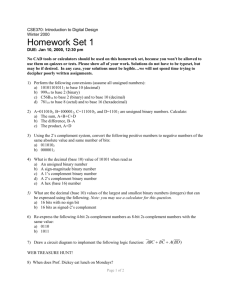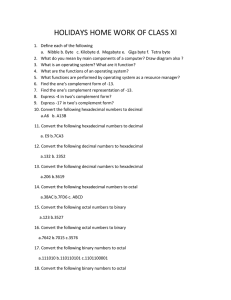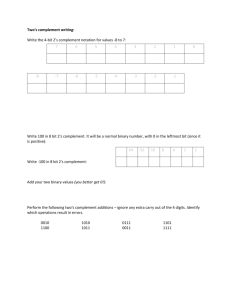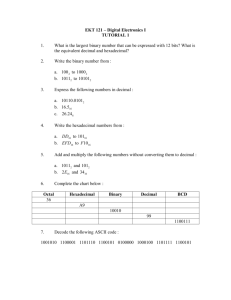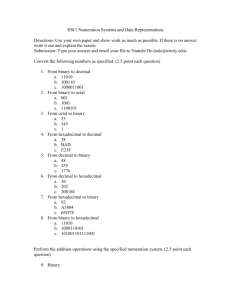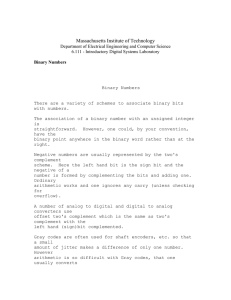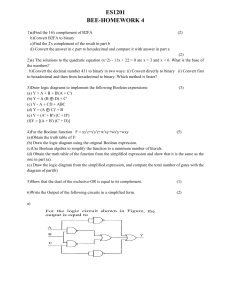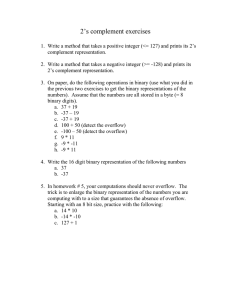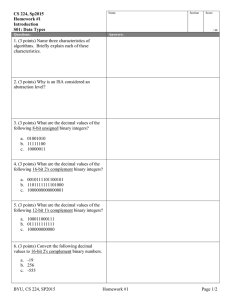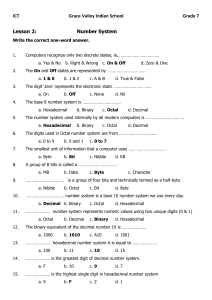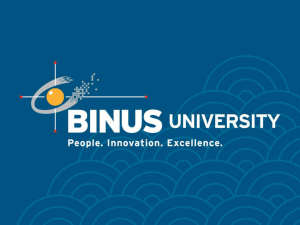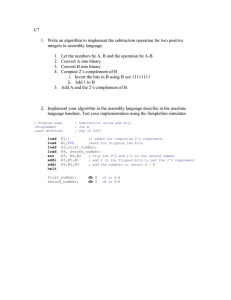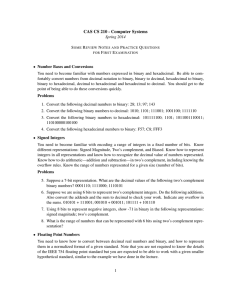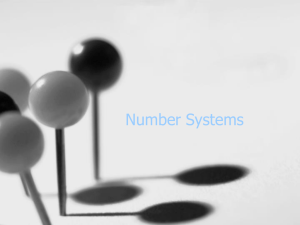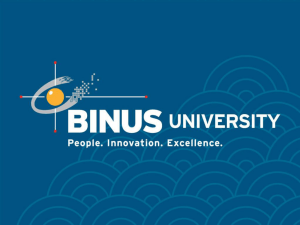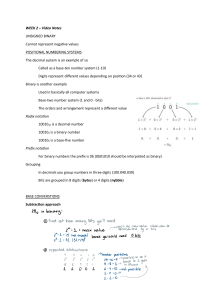Sheet 2
advertisement
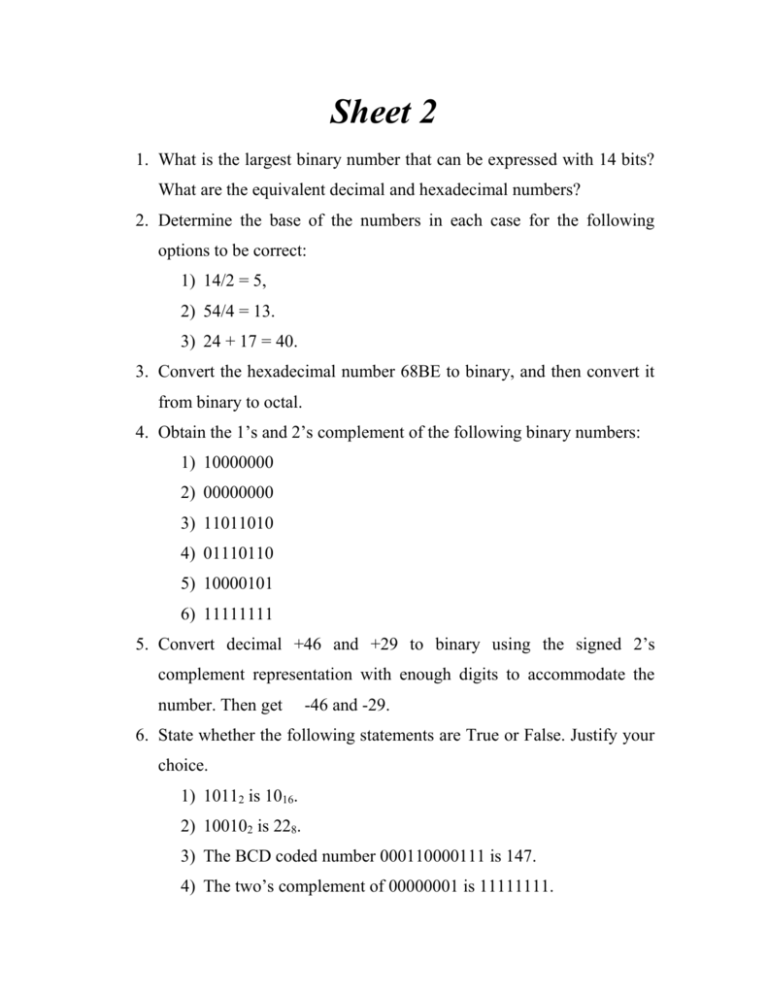
Sheet 2 1. What is the largest binary number that can be expressed with 14 bits? What are the equivalent decimal and hexadecimal numbers? 2. Determine the base of the numbers in each case for the following options to be correct: 1) 14/2 = 5, 2) 54/4 = 13. 3) 24 + 17 = 40. 3. Convert the hexadecimal number 68BE to binary, and then convert it from binary to octal. 4. Obtain the 1’s and 2’s complement of the following binary numbers: 1) 10000000 2) 00000000 3) 11011010 4) 01110110 5) 10000101 6) 11111111 5. Convert decimal +46 and +29 to binary using the signed 2’s complement representation with enough digits to accommodate the number. Then get -46 and -29. 6. State whether the following statements are True or False. Justify your choice. 1) 10112 is 1016. 2) 100102 is 228. 3) The BCD coded number 000110000111 is 147. 4) The two’s complement of 00000001 is 11111111. 5) A 16 bit register can hold unsigned numbers from 0 to 32768. 6) -32768 can be stored in 16 bit register as signed number. 7) The maximum positive number the can be stored in a single byte as signed number is 127. 8) Ones complement of zero is 11111111 in a single byte register.
